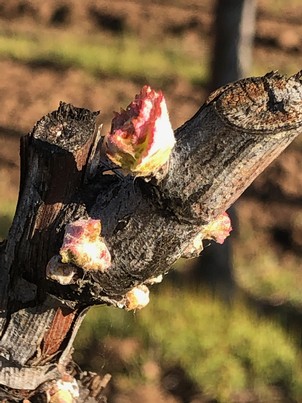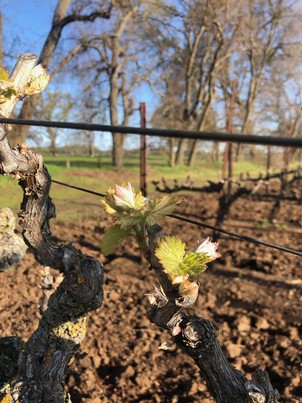News
Welcome to the St. Amant blog and news page. Here you will find the latest news, event activites, and other useful information to better enjoy St. Amant wines.
Spring in the Vineyard
There is something reasurring about spending time in the vineyard. We may all be sheltering in place, hunkred down, with most of the world shut down, but the vines are starting to grow. They will grow regardless of what is happening in the world. Nature follows its own course, and we are along for the ride.
The other day I took the time to travel up to our vineyard in Amador County. My parents purchased the property in 1970 when I was 6 weeks old. At the time, my dad just wanted to get back into farming, and had no plans to start a winery. Winegrapes were recommended, and in 1972 they planted their first vines. Own-rooted Zinfandel. Those vines ultimaely succombed to phyloxera, but that is another story, for another day. Today, I just wanted to see how things looked, check on the vineyard, and start thinking about the 2020 wines.
It's often said that great wines are made in the vineyard. Winemakers can take great grapes and make mediocre or brilliant wine, but mediocre grapes will at best lead to average wine. We strive to do better, and the shots below will give you a glimpse as we start the process of crafting our 2020 wines.


The left photo is Trousseau (Bastardo) and the right photo is Touriga Nacional. These vines were pruned back in December. A few things to note -
- Trousseau - notice there are at least 4 or 5 buds pushing out leaves. We will come back in a couple weeks to "shoot thin", removing three or four of those shoots, and leaving the most vigorous and well-postioned ones. Trosseau is notorious for pushing out a lot of shoots. This can lead to problems later in the season with over-cropping, clusters touching each other, and excesive shading around the fruit. Trousseau also rots easily so we want to avoid those conditions. We will sometimes have to shoot thin this variety twice because it will continue pushing out late shoots. This is an expensive process, but I believe setting up the vine correctly early on gives us the best chance to make delicious wine later.
- Touriga Nacional - this variety is one of the last varieites we pick every year, usually around the third to fourth week of October for our reds and port-styled wines. And that's aiming for 24-25 brix. It's a late ripener and produces a light to moderate crop. Yet it is one of the first varieties to push in our vineyard in the spring. This allows for an extended growing season. I believe Touriga Nacional is one of the most versatitle and successful varieties we grow in our vineyard. The grapes are used for a rose, table wine, and as a key component in our port-styled wines. Although it has a long growng season relative to the other varieties, the grapes are usually beautiful at harvest.


The left photo is Tinta Cao, and the right photo is our oldest block to Tempranillo. Both of these were pruned back in December as well. A few things to note about each -
- Tinta Cao - we've been growing this variety since 1980. We only have about 1 acre that is used exclusively for our port-styled wines. Years ago, my dad used it as a component in our "Tres Cachos" which was a three variety blend of our Portuguese varieties. Personally, I've never been that fond of it on its own. As you can see, it pushes out early, and usually ripens mid-September. It's an extremely vigorous variety and the vine just wants to keep growing all season. The trick with this variety is to slow that down and open up the canopy. I like to shoot thin it later hoping some of the younger shoots absorb some of the vigor and slow the vine down.
- Tempranillo - this is our oldest block of Tempranillo planted in 1998. It's about 3.5 acres and usually all of it ends up in our St.Amant Tempranillo. You will notice on these vines that the leaves have not pushed out yet. The buds were just starting to swell, and we will probably see leaves in about 5-7 days after this picture was taken. Tempranillo is an early ripening variety and we have picked this block as early as late August. It is also a vigorous variety that likes to grow in our vineyard. Managing the growth is key to producing quality wines.
Each variety and each season continue to pose different challenges, and require us to be vigilant in order to produce the best wines come fall. I'm convinced that the early season work of shoot thining and managing vigor are essential to producing quality wines, and leave us better prepared for any challenges that arrive in late summer early fall. Now, my biggest concern is a frost. Historically, we've had a bad frost as late as April 28, and we really don't relax until we get into early May.